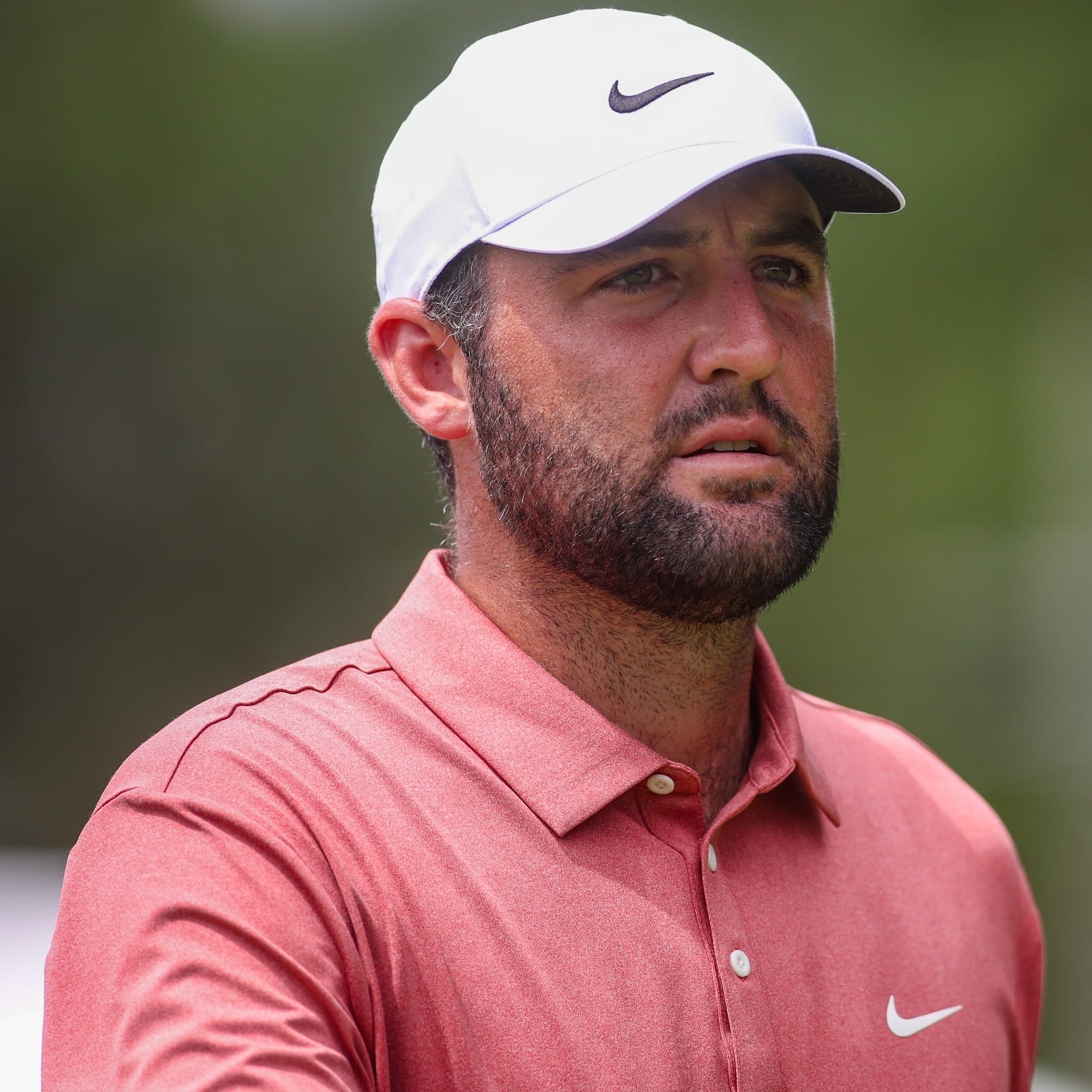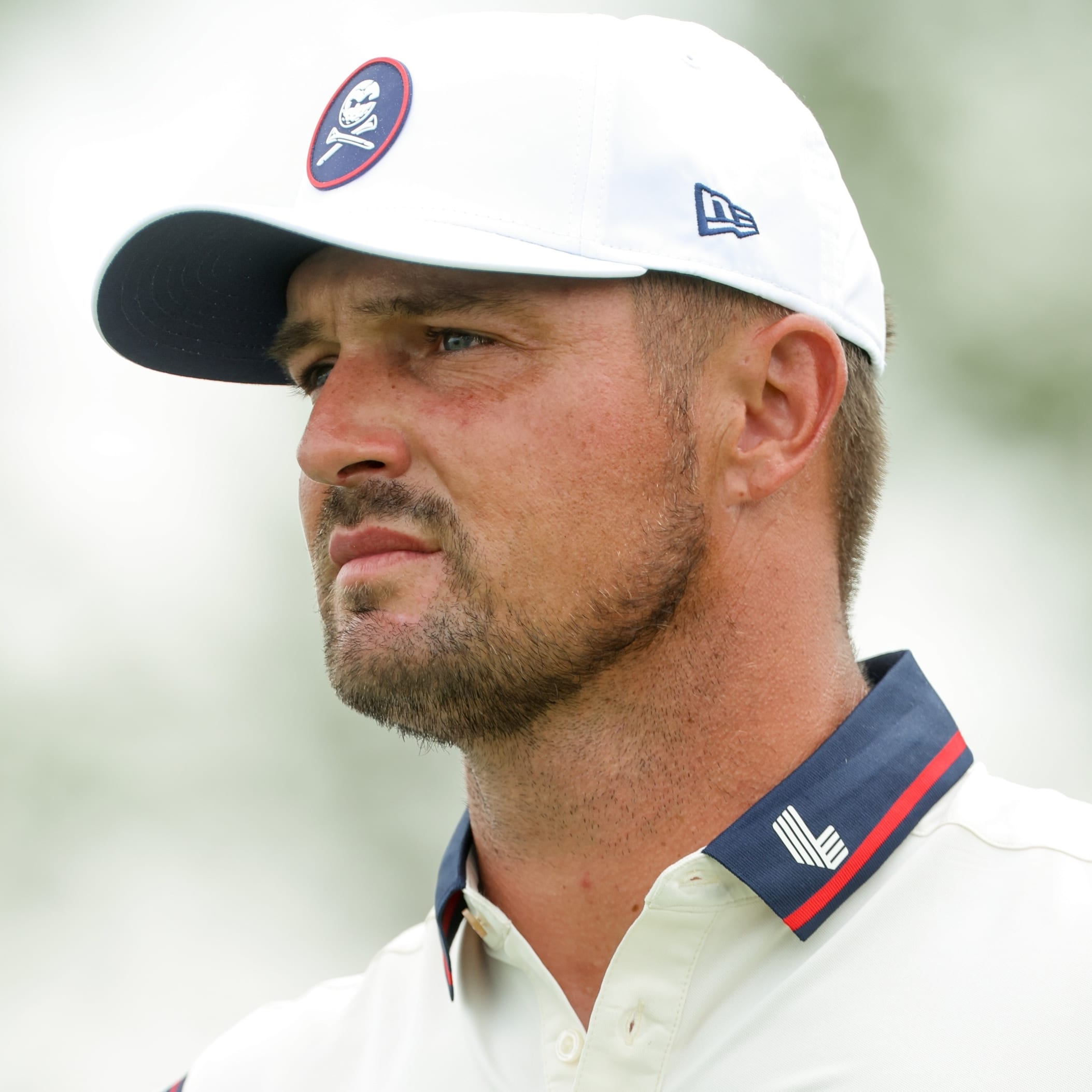Those of us who play fantasy golf know all too well there are no sure things (you know, other than Jim Furyk gagging on Sunday). We try to make educated guesses, but there's often no way to predict when a golfer will break through or suddenly decline. But there's certainly enough information out there to guide us. Here are some indicators, trends, whatever you want to call them that hopefully will help you on draft day.
1. Anchors Away
On Jan. 1, the anchored-putter ban goes into effect. Some golfers started ramping up by ditching the long putter last season. Others will use theirs until the bitter end. There's a very good reason such golfers started using the long putter in the first place: They can't putt. Adam Scott is the biggest name affected by this ban. He made the switch back early in 2015 but was so bad, he quickly returned to his broomstick. He just went to a conventional putter again for the Presidents Cup. There are others who recently made the switch or soon will have to. All will take a few steps back, or worse.
Consider: Adam Scott, Tim Clark, Kevin Stadler, Carl Pettersson, Webb Simpson, Keegan Bradley.
2. Check the Numbers, Stat!
Analytics are becoming more present in sports, and golf is no exception. The "strokes gained" stats are proving to be effective barometers. For example, Jordan Spieth, Jason Day and Dustin Johnson are top 3 in putting average (fewest putts per hole). We know
Those of us who play fantasy golf know all too well there are no sure things (you know, other than Jim Furyk gagging on Sunday). We try to make educated guesses, but there's often no way to predict when a golfer will break through or suddenly decline. But there's certainly enough information out there to guide us. Here are some indicators, trends, whatever you want to call them that hopefully will help you on draft day.
1. Anchors Away
On Jan. 1, the anchored-putter ban goes into effect. Some golfers started ramping up by ditching the long putter last season. Others will use theirs until the bitter end. There's a very good reason such golfers started using the long putter in the first place: They can't putt. Adam Scott is the biggest name affected by this ban. He made the switch back early in 2015 but was so bad, he quickly returned to his broomstick. He just went to a conventional putter again for the Presidents Cup. There are others who recently made the switch or soon will have to. All will take a few steps back, or worse.
Consider: Adam Scott, Tim Clark, Kevin Stadler, Carl Pettersson, Webb Simpson, Keegan Bradley.
2. Check the Numbers, Stat!
Analytics are becoming more present in sports, and golf is no exception. The "strokes gained" stats are proving to be effective barometers. For example, Jordan Spieth, Jason Day and Dustin Johnson are top 3 in putting average (fewest putts per hole). We know that Spieth and Day are two of the best putters on tour, but Johnson? In strokes gained-putting, Day is sixth, Spieth is eighth and Johnson is ... 70th. What we can glean from that apparent conundrum is that the big-hitting Johnson's approach shots -- usually short irons or wedges -- leave him in close proximity to the hole. We know he's not in the class of the other two. That's not to say that the top guys in SGP are the best -- Aaron Baddeley was first. This is a guide. Look at second-tier players with good SGP numbers.
Consider: Brendon Todd, Russell Henley, Harris English.
3. New Kids on the Block
Fifty golfers secure tour cards every year through the Web.com Tour. Golfers outside the top 125 (Nos. 126-200) on the PGA Tour can come back thanks to one or two good outings in the Web.com Tour Finals. The grads who played all season on the secondary tour may have the most upside. And if they won, even better.
Consider: Patton Kizzire, Jamie Lovemark, Martin Piller.
4. Non-Members Only
There is a small subset of golfers who took part in the Web.com Tour Finals: non-members on the PGA Tour who won enough money to finish inside the top 200 had they been eligible.
Consider: Emiliano Grillo, Hiroshi Iwata, Anirban Lahiri.
5. On the Leaderboard
Winning tournaments is great. Nothing better. But guys who string together some high finishes certainly help your team, while also helping themselves get a taste of being in the mix on Sunday. Perhaps a precursor to victory. Eye some golfers off the top tier who have a bunch of top-10s.
Consider: Kevin Na, Kevin Kisner, Daniel Summerhays, Jon Curran, Russell Knox.
6. Sophomore Slump
Often, we think rookies who make a splash will be even better the following season. And occasionally, they are. But more likely, they fall off a bit, or a lot. Maybe they have cash for the first time in their careers, maybe they stop working as hard as they did to get their cards. Not saying to avoid these guys, just don't overpay. Don't automatically assume that the arrow is pointing straight up.
Consider: Justin Thomas, Tony Finau, Daniel Berger.
7. A Descending Blow
While the arrow doesn't always point straight up, it often, cruelly, points straight down. Just ask David Duval. Phil Mickelson has now had two bad years in a row. Graeme McDowell couldn't even finish in the top 125. Bad years happen for a reason. Don't think a guy is going to rebound just because he's a big name.
Consider: Tiger Woods, Phil Mickelson, Adam Scott, Graeme McDowell, Ian Poulter, Hunter Mahan, Billy Horschel, Lee Westwood (who gave up his PGA Tour card).
8. Injuries
Obvious, of course, but you have to stay on top of this. Be mindful not only of guys who are hurt, but injury prone golfers. And we're not saying to avoid all these golfers, just proceed with caution, and don't overpay.
Consider: Tiger Woods (back surgery), Louis Oosthuizen (injury prone), Tim Clark (injury prone, plus the putter ban), Kevin Stadler (wrist, plus the putter ban), Bud Cauley (shoulder surgery), Brian Gay (thumb surgery), Padraig Harrington (knee surgery) Patrick Cantlay (back).
Here's the RotoWire injury page.
9. Fall Guys
A lot of the big names skip the 2015 portion of the 2015-16 wrap-around schedule. Last year, surprise victories by Robert Streb and Charley Hoffman kick-started great seasons. Even if a victory doesn't lead to a great season, it gets a guy into the Masters and maybe other majors and WGC events. As can some high finishes. For gamers whose leagues still draft at the traditional time (as does the RotoWire League) ...
Consider: Fall winners, strong finishers.
































